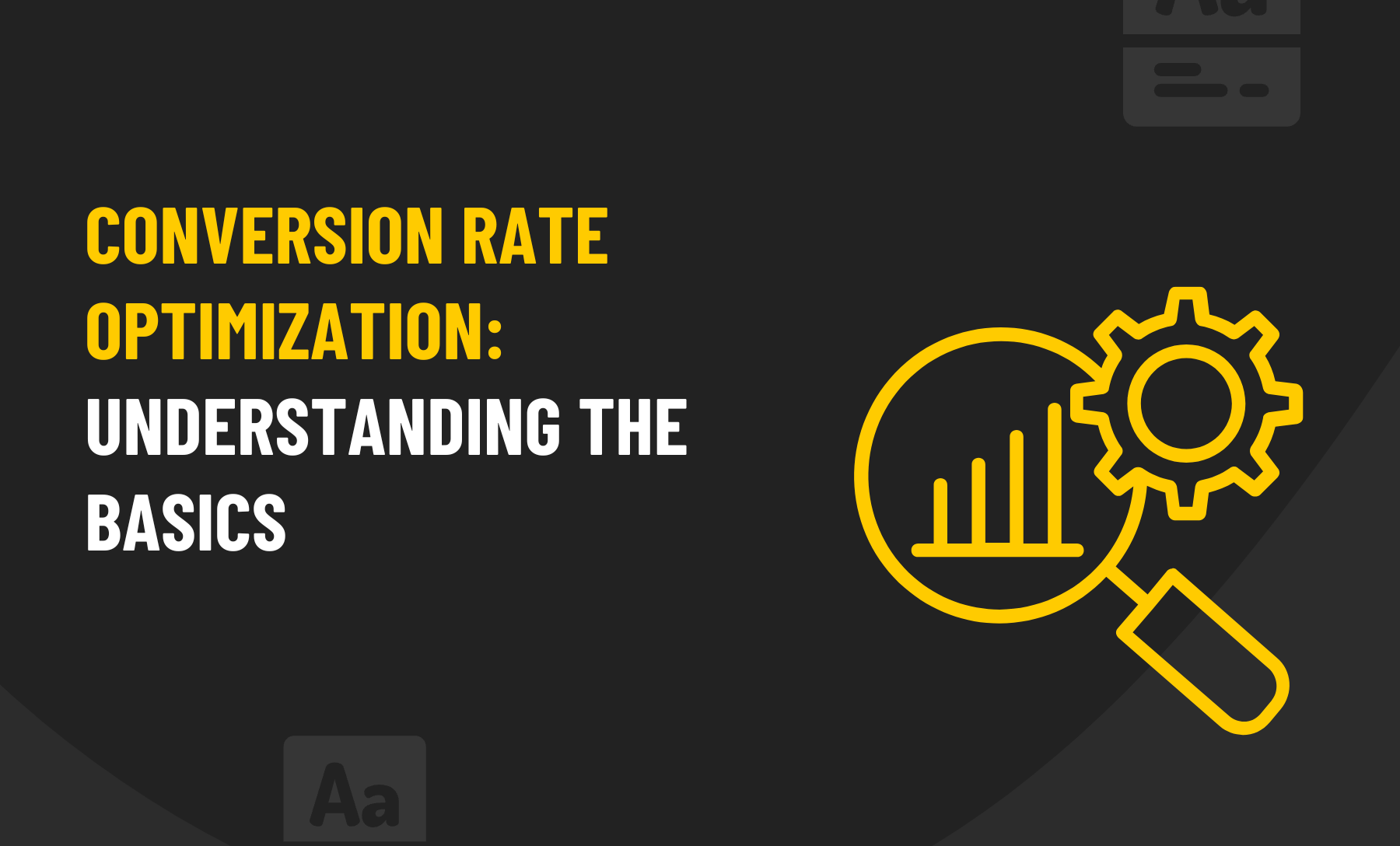As a website owner or digital marketer, you have likely heard of the term “Conversion Rate Optimisation“. CRO is an essential aspect of digital marketing that involves optimising your website to increase the percentage of visitors who take a desired action, such as making a purchase, filling out a form, or subscribing to a newsletter. But what exactly is CRO, and how does it work?
Every business that operates online wants to attract as many visitors to their website as possible. However, it’s not just about attracting visitors; it’s about converting them into customers. It focuses on improving the user experience on your website, leading to increased conversions and revenue.
In this blog series, we’ll explore the science behind CRO and break down the basics of this important digital marketing strategy. Whether new to CRO or looking to improve your existing strategies, this series is for you.
What Is CRO And Why It's Important
CRO stands for Conversion Rate Optimization, a process of improving the percentage of website visitors who complete a desired action, such as purchasing or filling out a form. CRO aims to increase the conversion rate and improve website performance.
CRO is important because it allows businesses to maximise their website’s potential and increase their ROI. By optimising the website’s design, content, and user experience, businesses can increase the likelihood of visitors taking the desired action. This can lead to more sales, leads, and conversions, ultimately driving business growth.
Additionally, CRO is a cost-effective way to improve website performance. Businesses can optimise their existing website to achieve better results rather than spending more money on advertising or traffic acquisition. CRO is an important digital marketing strategy that can help businesses improve website performance, increase conversions, and drive business growth.
Various Elements That Can Impact Conversion Rates Optimization

Many elements can impact conversion rate optimisation (CRO), including:
- Website design and layout: A website’s design and layout can affect how users interact with the site and ultimately impact the conversion rate. A clean, user-friendly design with clear calls to action (CTAs) can improve the conversion rate.
- Content quality and relevance: High-quality content can help build trust and credibility with website visitors, leading to higher conversion rates.
- Page load speed: Slow page load times can negatively impact the user experience and lead to higher bounce rates, ultimately lowering the conversion rate.
- Navigation and user experience: Intuitive navigation and a positive user experience can help visitors easily find what they are looking for and increase the likelihood of conversion.
- Mobile optimisation: With more and more people using mobile devices to access websites, it’s crucial to have a mobile-optimised site to ensure a positive user experience and improve conversion rates.
- Trust signals: Trust signals, such as customer reviews, social proof, and security badges, can help build trust and credibility with website visitors, leading to higher conversion rates.
- CTAs and form optimisation: Optimising the placement, design, and messaging of CTAs and forms can help improve the conversion rate by making it easy for visitors to take the desired action.
By focusing on these elements and continuously testing and optimising them, businesses can improve their website’s performance and achieve higher conversion rates.
Effective CRO Techniques And Strategies

Here are some effective CRO techniques and strategies that can help improve conversion rates:
- Conduct user research: User research, such as surveys or user testing, can provide valuable insights into what users seek and how they interact with your website.
- A/B testing: A/B testing involves testing different versions of a web page to determine which one performs better regarding conversions. This allows you to make data-driven decisions to optimise your website.
- Simplify forms: Complex forms with too many fields can be overwhelming and lead to higher abandonment rates. Simplify your forms and only ask for essential information to improve the user experience and increase conversions.
- Optimise CTAs: Optimise your calls-to-action (CTAs) by making them stand out visually and using compelling messaging. Testing different colours, wording, and placement can help determine the most effective CTA for your website.
- Improve page load times: Slow page load times can negatively impact user experience and lead to higher bounce rates. Improving page load times through techniques such as image optimisation and caching techniques can improve the user experience and increase conversions.
- Personalisation: Personalising the user experience based on past behaviour, such as recommending related products or content, can improve the user experience and lead to higher conversions.
- Leverage social proof: Social proof, such as customer reviews or testimonials, can help build trust and credibility with website visitors, leading to higher conversion rates.
By implementing these techniques and continuously testing and optimising them, businesses can improve their website’s performance and achieve higher conversion rates.
Importance Of Ongoing Testing And Optimisation
Ongoing testing and optimisation are critical for the success of any conversion rate optimisation (CRO) effort. The digital landscape constantly evolves, and consumer behaviour and preferences can change rapidly. Therefore, businesses must continuously test and optimise their website to ensure it meets their users’ needs and achieves their goals.
Businesses can identify what works well and what needs improvement by continuously testing and optimising various website elements, such as its design, content, and calls-to-action (CTAs). This helps make data-driven decisions, ensuring that optimisation efforts focus on areas that will significantly improve conversion rates.
Moreover, continuous testing and optimisation can help businesses stay ahead of the competition. By continuously monitoring performance and making improvements, businesses can adapt to changes in the market, consumer behaviour, and preferences, ensuring that their website remains relevant and effective.
Key Performance Indicators (KPIs) To Track In CRO
Key performance indicators (KPIs) are critical metrics that businesses can track to measure the success of their conversion rate optimisation (CRO) efforts. Here are some of the most important KPIs to track in CRO:
- Conversion Rate: This is the most basic and essential KPI to track in CRO. It measures the percentage of website visitors who take the desired action, such as filling out a form, purchasing, or downloading content.
- Bounce Rate: This metric measures the percentage of website visitors who leave after viewing only one page. High bounce rates could indicate an issue with website design, usability, or content.
- Average Time on Site: This KPI measures visitors’ average time on a website. Longer average times indicate that visitors are engaged with the content and find it useful.
- Click-Through Rate (CTR): CTR measures the percentage of website visitors who click on a specific link or call-to-action (CTA). High CTRs could indicate that the CTA is relevant and compelling.
- Cost per Acquisition (CPA): CPA measures the cost of acquiring a new customer or leads through advertising or other marketing efforts. Businesses can improve their return on investment (ROI) by reducing CPA.
- Revenue: This KPI measures the total revenue generated from website conversions. By increasing revenue, businesses can achieve their financial goals and improve their bottom line.
By tracking these KPIs, businesses can gain insights into their website’s performance and identify improvement areas. Businesses can achieve higher conversion rates and better results by continuously optimising and improving their website.
Conclusion
Conversion rate optimisation is a vital aspect of digital marketing that can help businesses improve their website’s performance and ultimately increase revenue.
By understanding the basics of CRO, such as the elements that can impact conversion rates and effective techniques and strategies, businesses can make data-driven decisions to optimise their website and improve user experience.
Continuous testing and optimisation are key to achieving higher conversion rates, and businesses should prioritise investing in CRO to stay competitive in today’s digital landscape. With a better understanding of the science behind CRO, businesses can take their digital marketing efforts to the next level and achieve their goals.
FAQ
How long does it take to see results from CRO efforts?
The timeline for seeing results from CRO efforts varies depending on the specific website and the extent of changes that need to be made. However, clients typically expect to see some improvement within the first few weeks to months of implementing CRO strategies.
How can I optimise my landing pages for better conversion rates?
To optimise landing pages for better conversion rates, you can use strategies such as simplifying the page design, making the call-to-action prominent and compelling, using persuasive and relevant content, minimising distractions, optimising form fields, using testimonials or social proof, and testing different elements to find the most effective combination for your target audience.
How can I use data to improve conversion rate optimisation?
Data analysis is a critical component of conversion rate optimisation. You can use tools such as Google Analytics to track user behaviour, measure key metrics, and identify areas for improvement. By analysing data, you can gain insights into user preferences, identify bottlenecks in the conversion funnel, and make data-driven decisions to optimise your website for better conversion rates.








